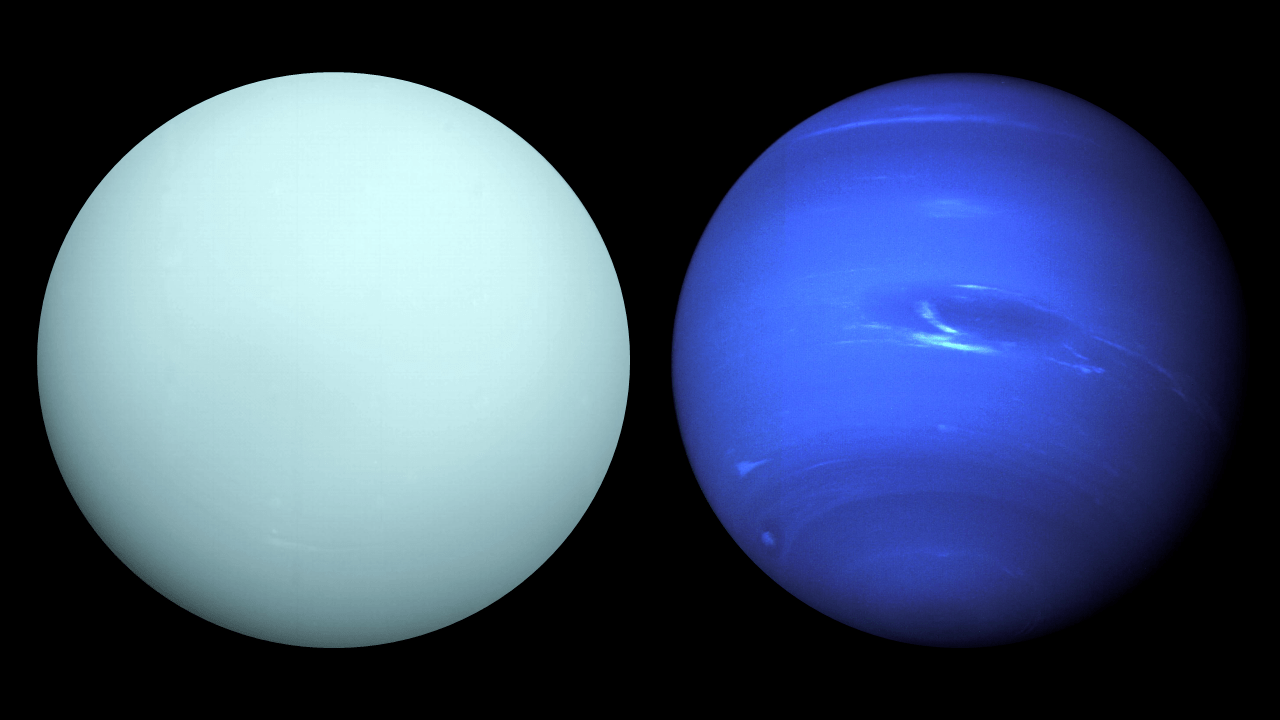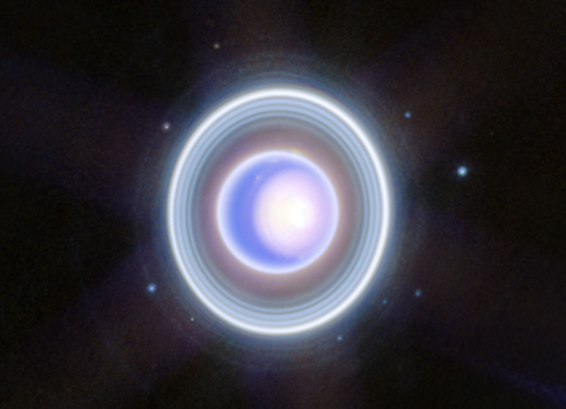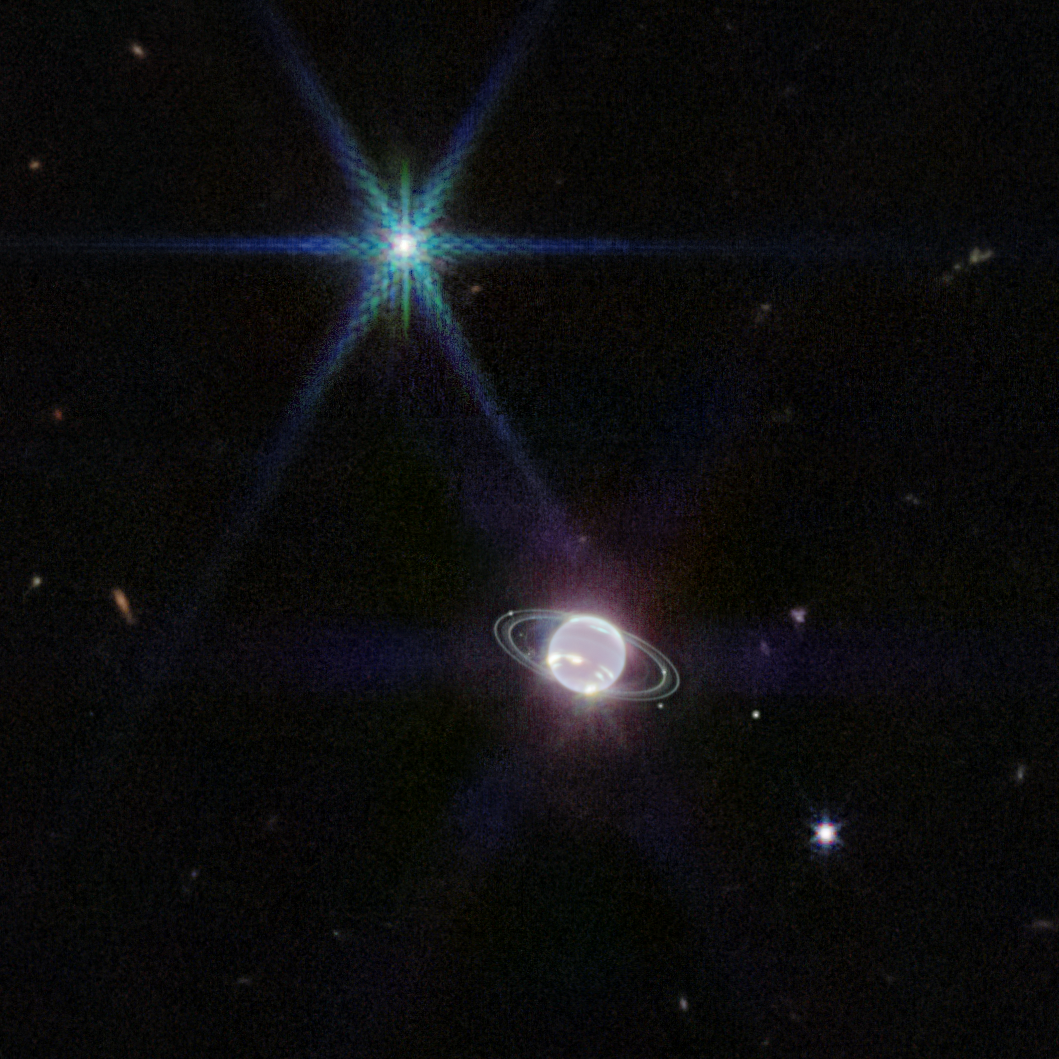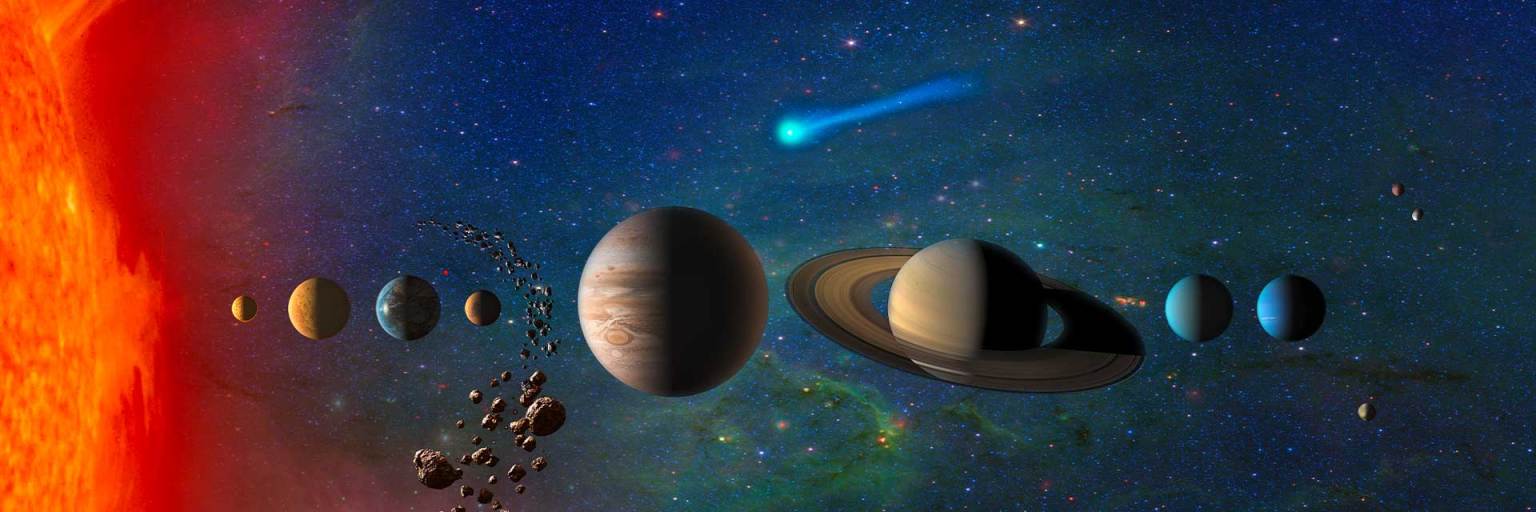Discover the Ice Giants
In addition to the resources on this page, follow along with updates on the ice giant planets, Uranus and Neptune, through @NASASolarSystem on your preferred social media platform.
Uranus
Learn more about Uranus, a very cold and windy planet that rotates at a nearly 90-degree angle from the plane of its orbit. This unique tilt makes Uranus appear to spin on its side.
Explore
Uranus Animations and Videos
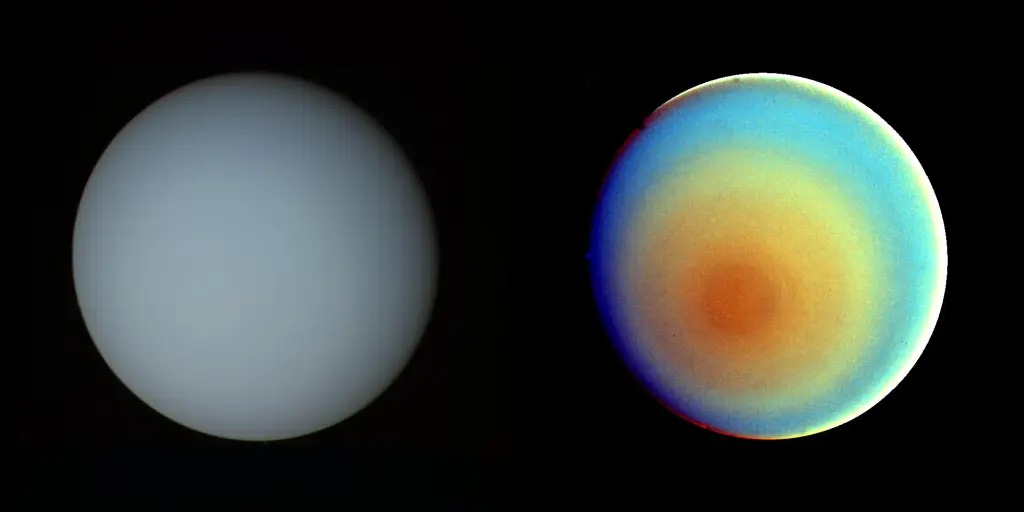
Have We Been to Uranus? We Asked a NASA Expert
In 1986, NASA's Voyager 2 gave us our first and only close-up look at this ice giant. A NASA scientist explains why Uranus is worth a second visit.
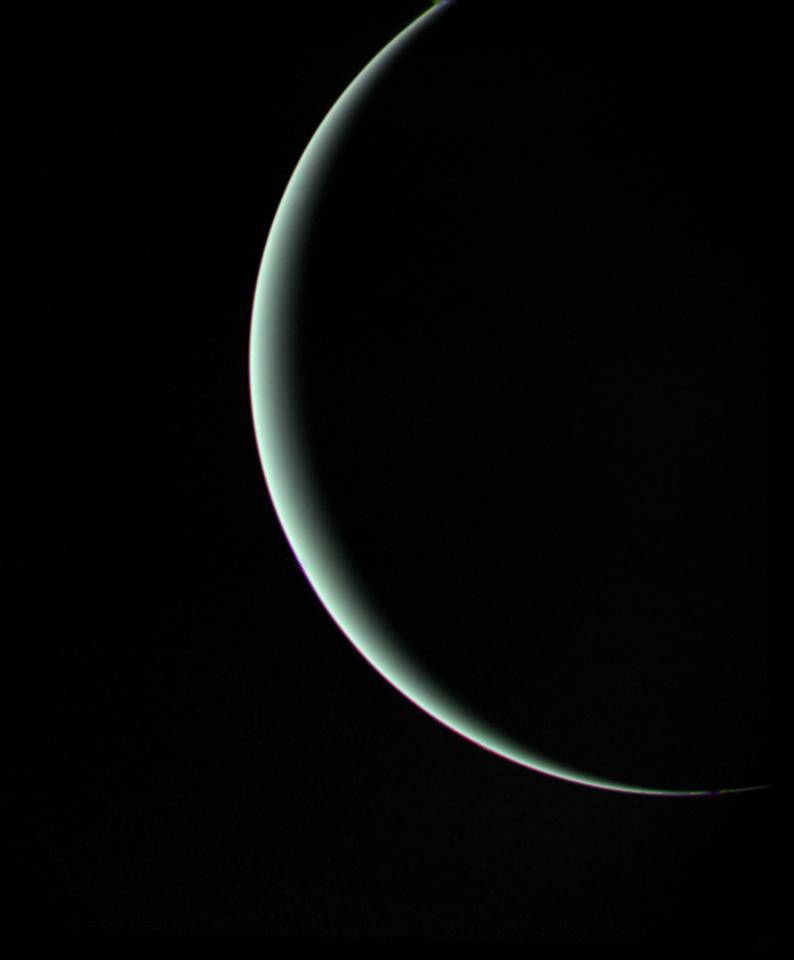
Exploring Planet Uranus
Discover the planet Uranus, as well as its rings and moons, and learn how it can help us unlock some of the remaining mysteries of our universe.
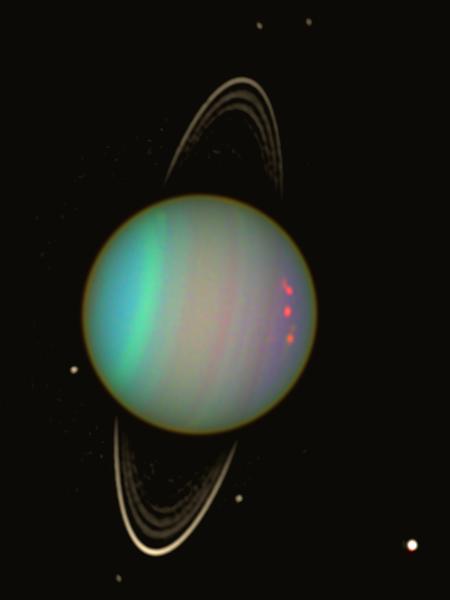
Dancing Uranus
In the dance of our solar system, one planet has moves like no other. Find out how Uranus's tilt puts it in a league all its own.
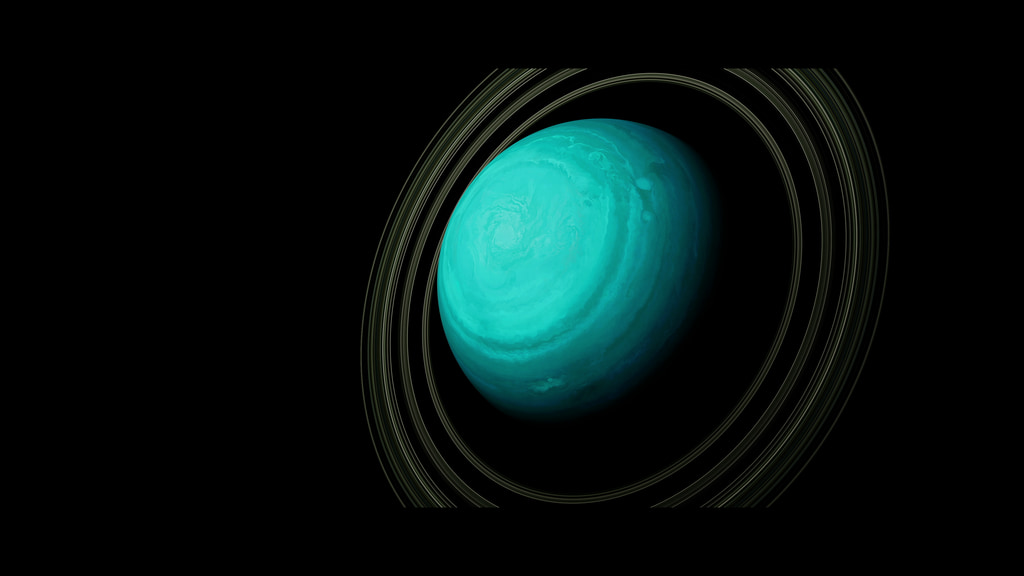
Uranus Through the Eyes of Webb
Close-up view of Uranus
This image of Uranus from NIRCam (Near-Infrared Camera) on NASA's James Webb Space Telescope exquisitely captures Uranus's seasonal north polar cap and dim inner and outer rings. This Webb image also shows 9 of the planet's 27 moons – clockwise starting at 2 o'clock, they are: Rosalind, Puck, Belinda, Desdemona, Cressida, Bianca, Portia, Juliet, and Perdita.
Image credit: NASA, ESA, CSA, STScI
Planetary Alignment Provides NASA Rare Opportunity to Study Uranus
When a planet’s orbit brings it between Earth and a distant star, it’s more than just a cosmic game of…
Read the Story
Neptune
Learn more about Neptune, the windiest (with wind speeds of more than 1,200 miles per hour or 2,000 kilometers per hour) and most distant planet in the solar system.
Explore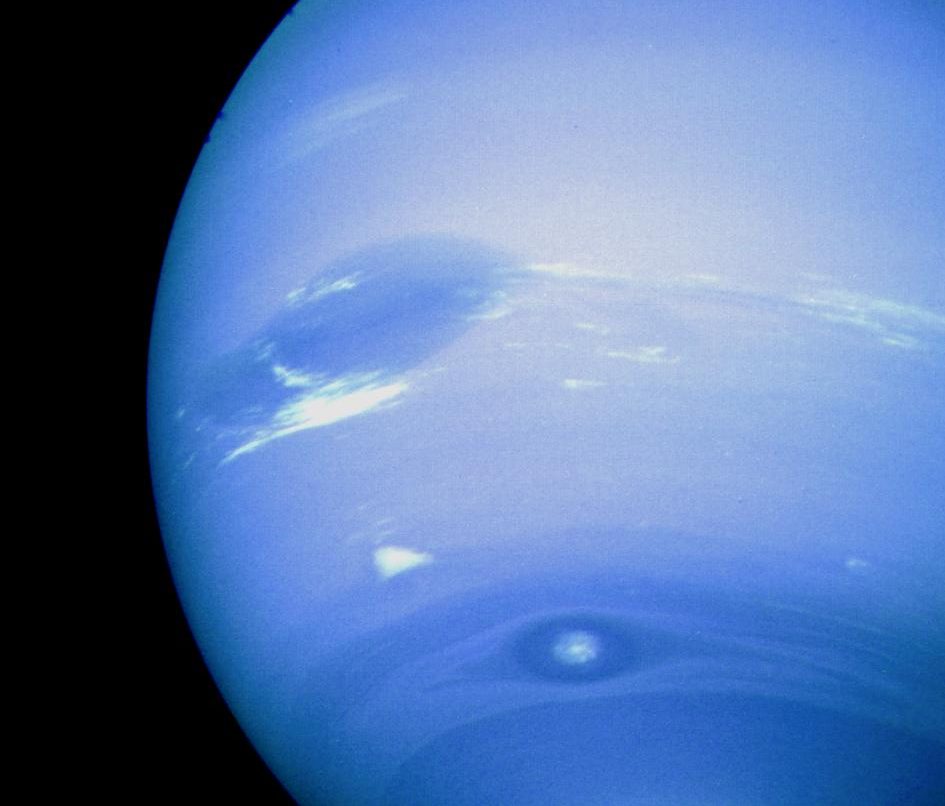
Neptune Animations and Videos

Cosmic Cycles: Planetary Fantasia
Discover the planets in this unique fusion of music and science.
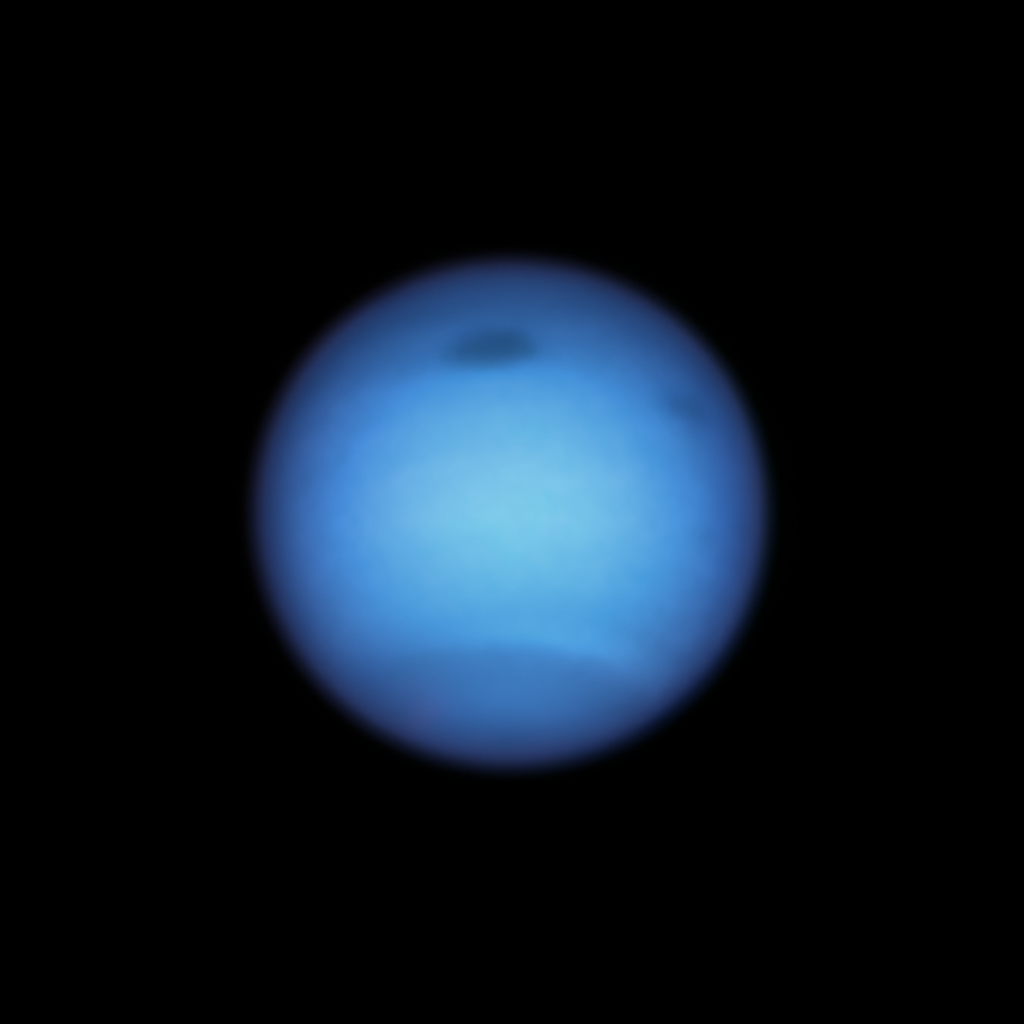
Neptune's Disappearing Clouds Linked to the Solar Cycle
Discover how the Sun's 11-year solar cycle is playing a role in Neptune's cloud abundance, as observed by the Hubble Space Telescope.
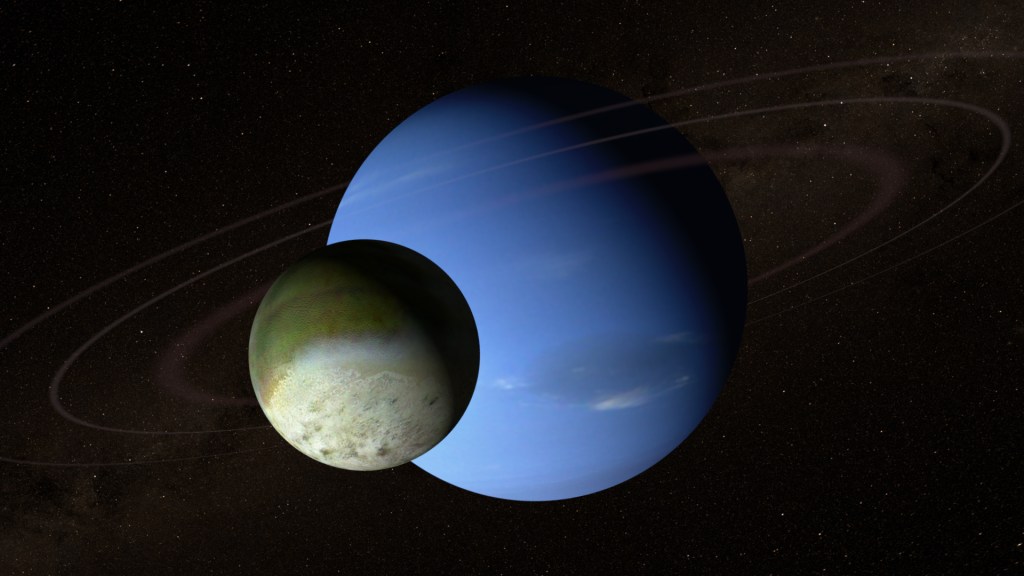
Kepler Stares at Neptune
Explore Neptune through the eyes of NASA's Kepler spacecraft, which detected small changes in Neptune's brightness caused by the planet's daily rotation, the movement of clouds, and even seismic waves from the Sun itself.
Neptune Through the Eyes of Webb
Neptune and its rings
In this image of the Neptunian system, NASA's James Webb Space Telescope captured seven of Neptune's 14 known moons: Galatea, Naiad, Thalassa, Despina, Proteus, Larissa, and Triton. The planet's large and unusual moon, Triton, dominates this Webb portrait as a very bright point of light sporting the signature diffraction spikes seen in many of Webb's images.
Image credit: NASA, ESA, CSA, STScI
NASA’s Webb Captures Neptune’s Auroras For First Time
Long-sought auroral glow finally emerges under Webb’s powerful gaze For the first time, NASA’s James Webb Space Telescope has captured…
Read the Story
Activities
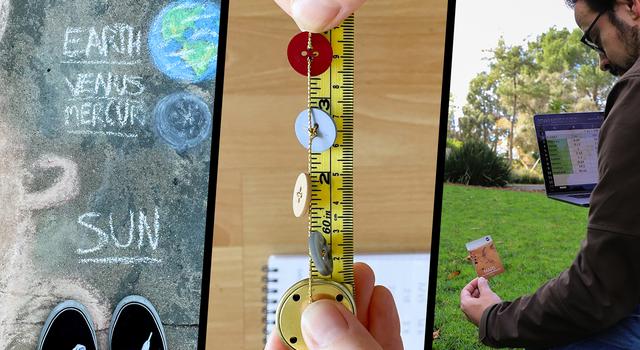
Make a Scale Solar System
Create your own scale model of the solar system by learning how to calculate scale distances, the relative sizes of planets, or both. Then, use beads and string, sidewalk chalk, or your own creative choice of materials to build a model you can explore – or maybe even wear!
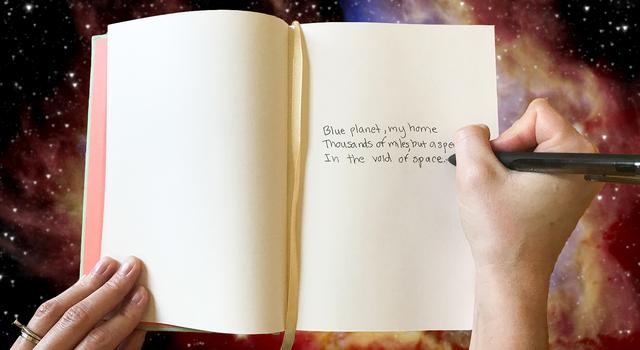
Write a Poem About the Ice Giants
In this activity, you'll learn about different kinds of poems and find out how to create your own poetry inspired by space.

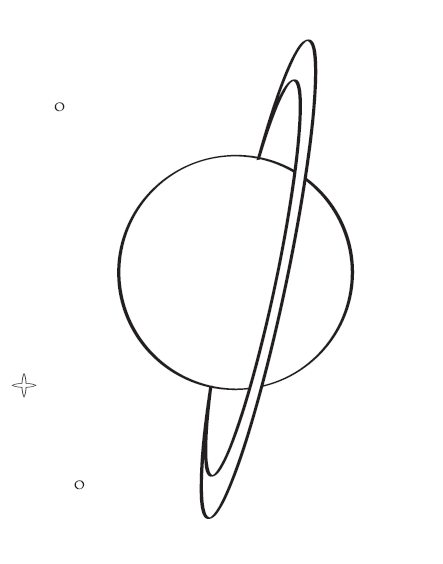
Posters
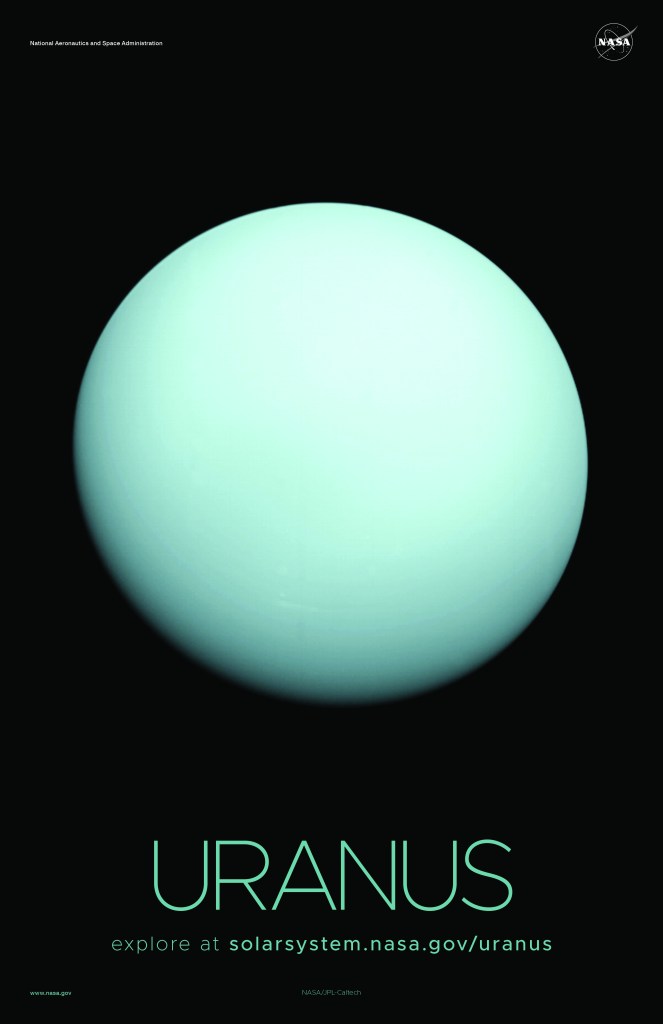
Uranus Poster - Version A
A view of the planet Uranus captured by NASA's Voyager 2 spacecraft on January 14, 1986, from a distance of approximately 7.8 million miles (12.7 million kilometers).
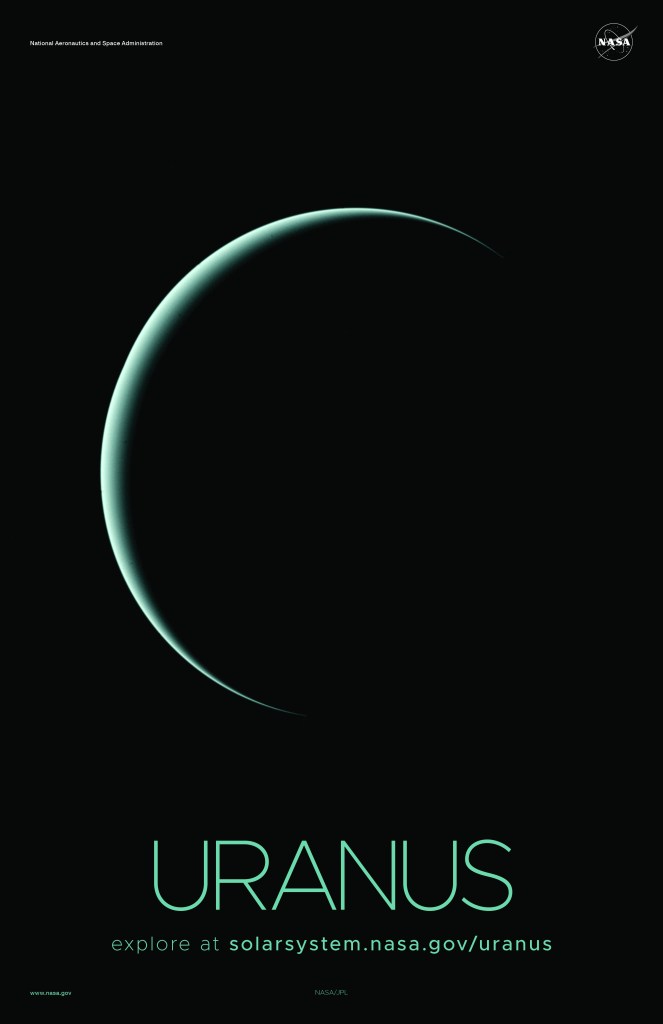
Uranus Poster - Version B
An image of a crescent Uranus captured by NASA's Voyager 2 spacecraft.
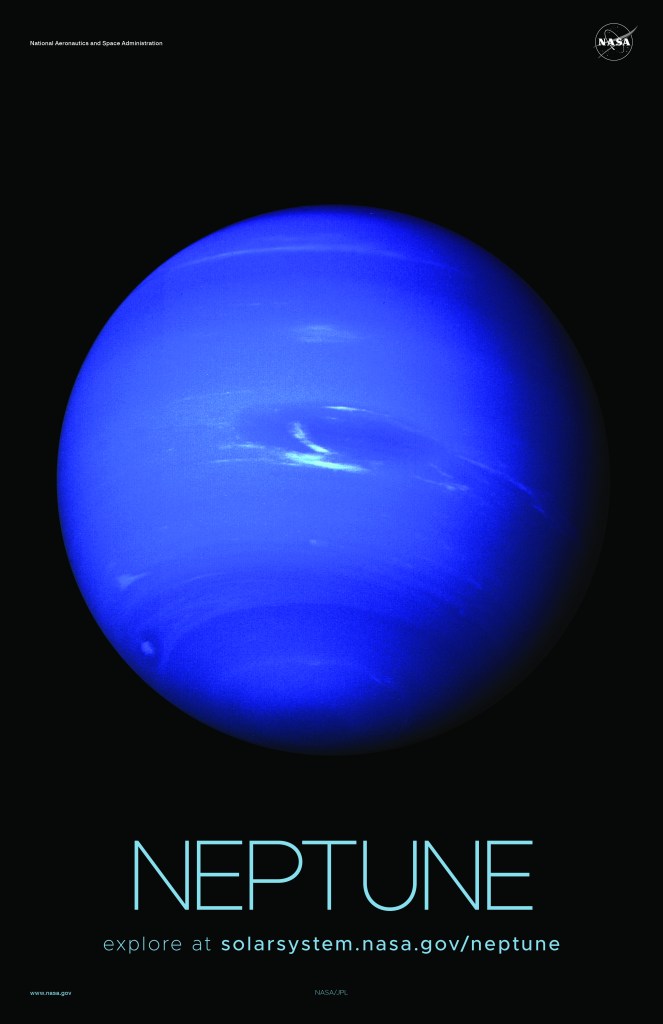
Neptune Poster - Version A
This image of Neptune was taken by NASA's Voyager 2 spacecraft in 1989, at a range of 4.4 million miles (7.1 million kilometers) from the planet.
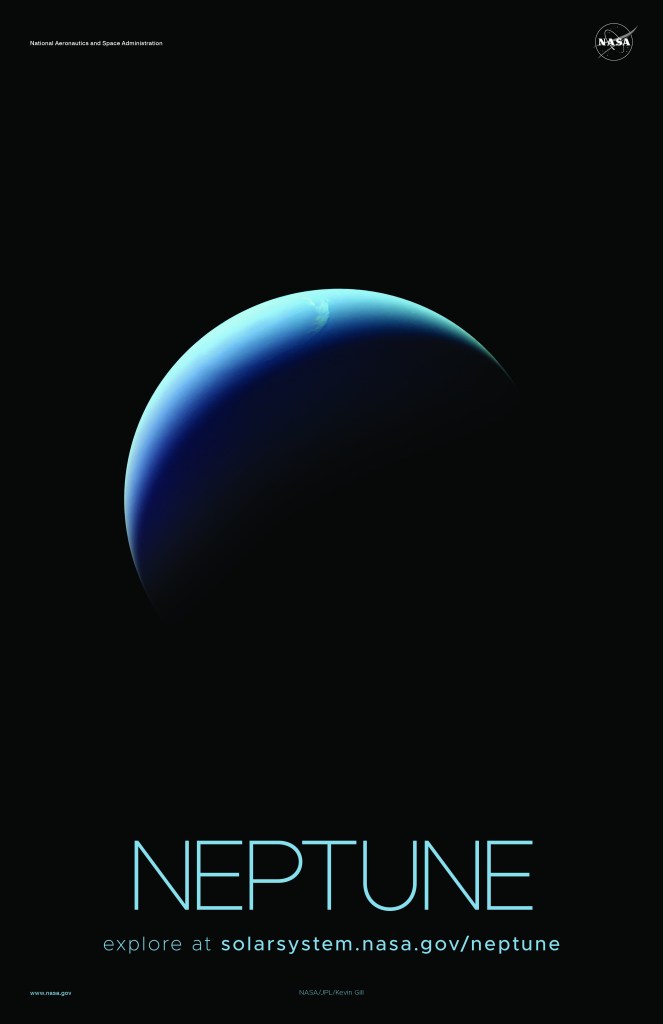
Neptune Poster - Version B
This view of a crescent Neptune was taken by NASA's Voyager 2 spacecraft on August 31, 1989.


























